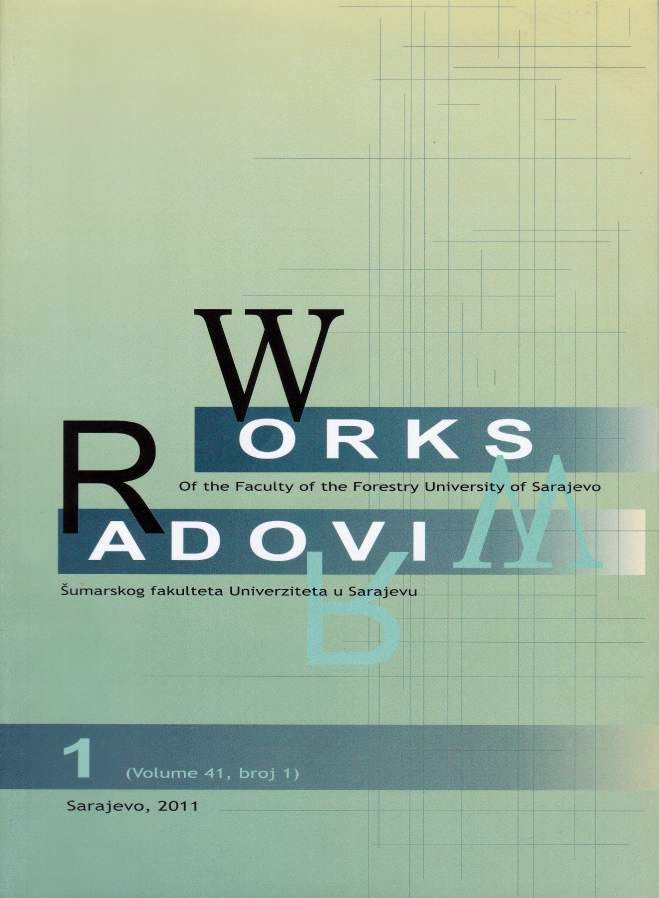SEKUNDARNA MREŽA ŠUMSKIH PUTEVA NA STRMIM TERENIMA
DOI:
https://doi.org/10.54652/rsf.2011.v41.i1.141Ključne riječi:
tractor road, longitudinal slope, timber skidding costsSažetak
UDK 630*38
Secondary forest roads network or so-called technical infrastructure of the component should fulfill three important functions: (1) biological, (2) technical and (3) economical. By limitation of movement of working devices and loads via designed routes, the damages of soil and component have been minimized enabling their easier and faster movement. This results in more productive work with reduction of skidding costs and level of forest damages at the same time. The most important feature of tractor roads as the most frequent way of secondary forest roads network in Bosnia and Herzegovina is surely their longitudinal slope. The maximum allowed longitudinal slope of tractor roads should not exceed 12% if their conversion into truck roads has been planned for the future (Jeličić, 1983). On the contrary, the longitudinal slope of tractor roads should not exceed 16 % if the erosion activity of water and long-term usage of tractor roads have been taken into account (Jeličić, 1983), which is almost the rule in Bosnia and Herzegovina forestry practice. However, the maximum longitudinal slope of tractor roads in practice is very often higher than 30 %, which usually results with their fast ruining due to erosion impact of the water. In this article, at the selected forest area-department, the impact of the longitudinal slope of tractor roads and openness of a forest department and timber skidding costs have been analyzed.
Downloads
References
BAJRIĆ, M., 2005: Mogućnost konverzije glavnih traktorskih puteva nagiba do 12 % u prilazne kamionske puteve, Magistarski rad, Šumarski fakultet, Sarajevo.
DOBRE, A., 1987: Izgradnja šumskih puteva u predjelima gdje se primjenjuju žičare, Mehanizacija šumarstva, 3-4 Zagreb
JELIČIĆ, V., 1983: Otvaranje šuma primarnom i sekundarnom mrežom šumskih puteva, Mehanizacija šumarstva, 8,11-12, Zagreb, str.1-192.
JELIČIĆ, V., 1983: Šumske ceste i putevi, skripta, Zagreb.
JELIČIĆ, V., 1985: Studija otvaranja odjela 70 i 71 u GJ „Jadovnik – Drvar“ dio, Sarajevo
KULUŠIĆ, B., 2003: Iskorištavanje šuma – manuskript.
PIČMAN, D., & PENTEK, T., 1996: Utjecaj uzdužnoga nagiba traktorskih vlaka na otvorenost odjela, Zaštita šuma i pridobivanje drva, Zagreb.
Pravilnik o gozdnih prometnicah, Uradni list Republike Slovenije RS 104/2004
ROBEK, R., & MEDVED M., 2001:, Implementation of cable logging requirements in environmentally sound road construction. FAO - Workshop proceedings new trends in wood harvesting with cable systems for sustainable forest management in the moutains. Ossiach, Austria.
SOKOLOVIĆ, DŽ., 2008: Uticaji nagiba terena na pravilan izbor vrste šumskog transportnog sredstva, Disertacija, Šumarski fakultet, Sarajevo






















